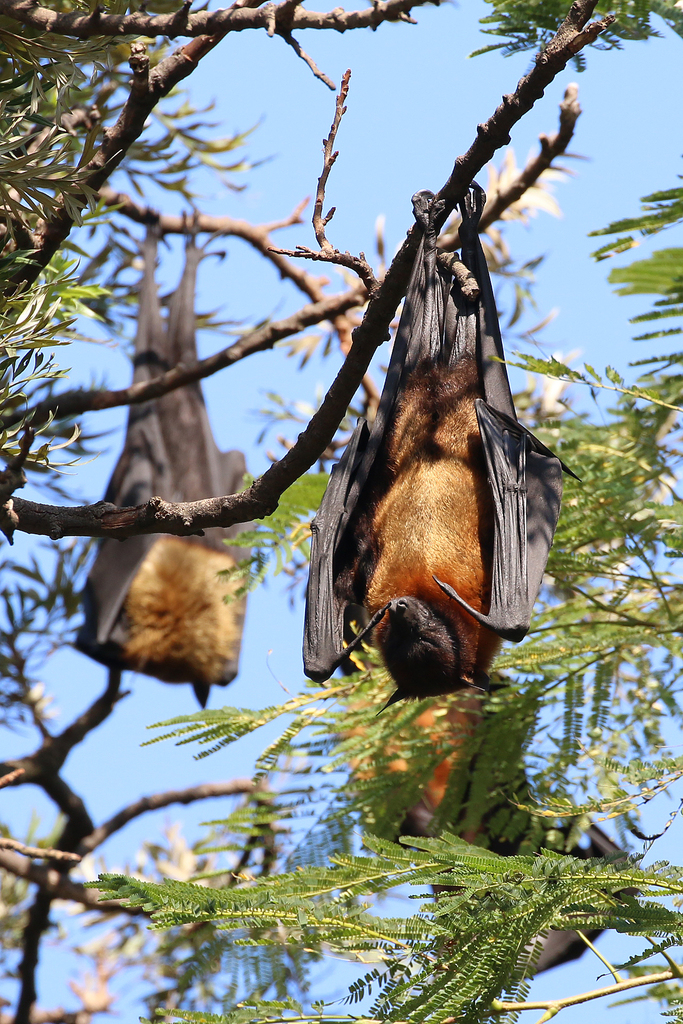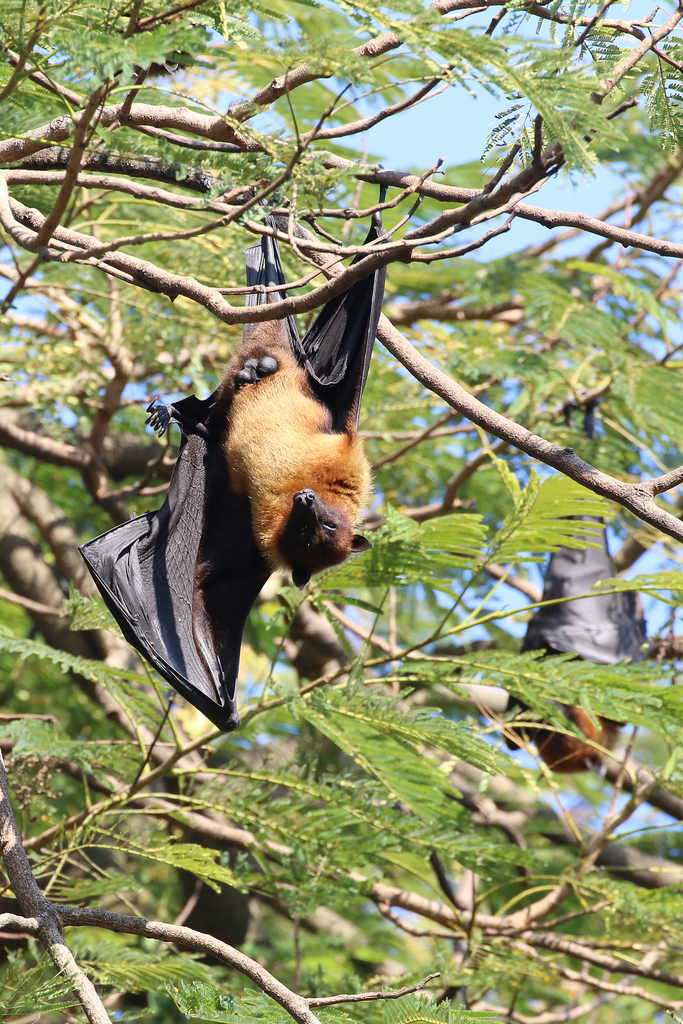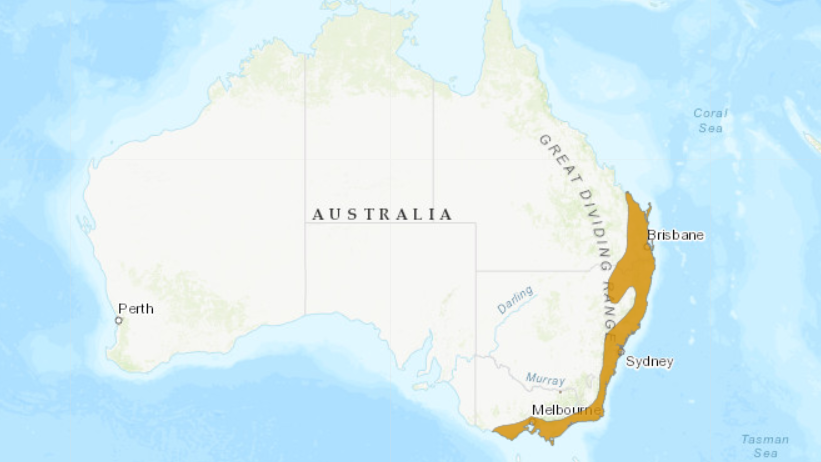The Indian Flying Fox
Pteropus giganteus
Taxonomy[14]
- Kingdom: Animalia
- Phylum: Chordata
- Class: Mammalia
- Order: Chiroptera
- Family: Pteropodidae
- Genus: Pteropus
Physical Description




(Indian flying fox, Martin Mandak, http://www.inaturalist.org)
- The Indian flying fox is one of the largest bats in the world.[11]
- Average weight: 1.1 kg. However, these bats can weigh up to 2 kg.[21]
- Average wingspan: 1.7 m[21]
- They have Chestnut brown fur over most of the body, with a darker area around the eyes.[21]
Diet: Frugivore
- Although fruits comprise the majority of their diet, they also consume the flowers, leaves, and seeds of various plant species.[7,11,25]
Geographic Range[14]

- These bats are endemic to Asia. They are found in India, Bangladesh, Bhutan, China, India, Maldives, Nepal, Pakistan, Sri Lanka.[14]
Natural Habitat: Forest
- They are mainly found in subtropical or tropical moist lowland forests.[14]
- They are also commonly found roosting in urban areas.[1,11]
Life History
- The bats roost in large colonies numbering from 100-1000 individuals on large trees and in urban areas. They are often found near agricultural fields, ponds, and the sides of roads.[1,14]
- The bats breed twice a year, with a mass mating event occurring in both the spring and autumn.[13]
- Females give birth in the summer after the spring breeding event or in the winter after the autumn breeding event and raise the young on their own.[13]
- Females typically have one offspring per birth event.[13]
- Young stay with the mother until they are 3 months old.[13]
Conservation Status: Least Concern[14]
- Population trend: Decreasing[14]
- The bats face no major threats, but minor threats include:
- Cutting down of trees they use for roosting and feeding.[14]
- Being hunted for meat or medicine[14] or as a form of pest control.[25]
Grey-Headed
Flying Fox
Pteropus poliocephalus
Taxonomy[10]
- Kingdom: Animalia
- Phylum: Chordata
- Class: Mammalia
- Order: Chiroptera
- Family: Pteropodidae
- Genus: Pteropus
Physical Description

- The grey-headed flying fox is one of the largest bats in the world.[2]
- Average weight: 0.825 kg[2]
- Maximum wingspan: 1.2 m[8]
- These bats have grey fur over most of their body, with a grey head and a distinctive orange mantle surrounding the head.[8]
- Males tend to be larger than females.[8]
Diet: Frugivore
- Although fruits comprise the majority of their diet, they also consume the flowers, leaves, and seeds of various plant species.[20]
- They may also consume insects.[4]
Geographic Range[10]

- These bats are endemic to Australia. They are found along the east coast of Australia, including the east coasts of Queensland and New South Wales and the east and south coasts of Victoria.[10]
Natural Habitat: Forest
- Some areas that they can inhabit include moist forest, open forest, woodlands, swamps, and mangroves.[10]
- They can also be found in fruit plantations and other urban areas.[10]
Life History
- Mating occurs in April and May[8]. There are no permanent breeding pairs.[8]
- Young bats are born in the fall[2]. The majority of young are born in October.[8]
- A female raises the young bat on her own. She will typically raise a maximum of 1 offspring per year, although twins have been observed.[8]
- The young bat stays completely attached to the mother for 5 weeks.[8]
- After 5 weeks, the young bats can detach from the females. The females can leave the young at camp while they leave to feed.[8]
- Young bats typically start flying by 3 months of age.[8]
- Young bats are weaned starting around 5-6 months of age.[8]
- Bats will be ready to breed by the age of 2 years.[8]
Conservation Status: Vulnerable[10]
- Population trend: Decreasing[10]
- Major threats: Residential and commercial development, agriculture and aquaculture, pest trapping, logging, competition with other bats, and pollution.[10]